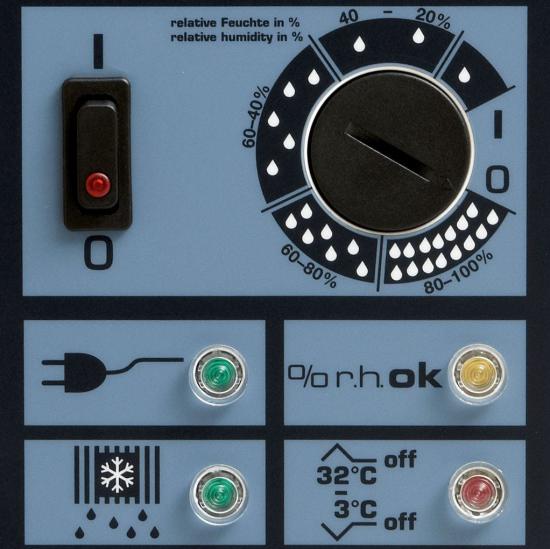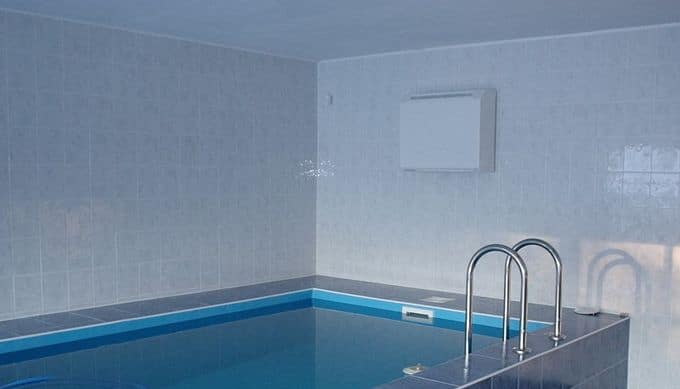Small home pools have become popular in recent decades. Of course, they create a problem of high humidity. But modern pool dehumidifier successfully solves this problem. They perfectly cope with this task, providing a normal level of humidity in the house.
Typically, one square meter of water surface evaporates 190-230 ml of water per hour. Of course, water vapor is deposited on all surfaces and provokes the intensive growth of microspores mold and putrefaction bacteria. Additionally, excess moisture accelerates the corrosion process, destroying the construction and finishing materials. Moreover, too humid air is harmful for people with asthma and allergy.
Unfortunately, traditional ventilation systems are not always effective for elimination of excess moisture. For example, the ventilation is ineffective at elevated ambient humidity. Additionally, powerful ventilation systems consume a lot of electricity. Therefore, dehumidifiers are widely used for providing the optimal microclimate. Of course, the choice of the optimum dehumidifier depends mainly on the price and features of a dehumidifier.
Pool dehumidifiers are divided according to the operation principle into three types.
Condensation dehumidifiers
Most common condensation dehumidifiers work as follows. Initially, air enters from room to the cooled heat exchanger. Then, the moisture condenses on the heat exchanger surface and is removed through drainage. Today, almost all mobile compact models use this operation principle.

Thereafter, the dry cold air is supplied on the second heat exchanger with high temperature, is heated and fed back into the room.
Adsorption dehumidifiers
The chamber of adsorption dehumidifier is filled with special granules that absorb moisture from the air. Today, the market offers an abundance of different absorbents.

Assimilatory dehumidifiers
Assimilatory device uses the ventilation and heating the air. Principle is based on directly proportional dependence maximum humidity of air from its temperature. The heated air absorbs moisture in the room due to its high temperature and goes out to the outside through the ventilation system. But these models consume a lot of energy and direct the warm air to the street that increases costs in the winter. High efficiency at wet cold weather is its main advantage.
Models are also are divided by type of mounting. Mounting on the wall or installing on the floor is well suited to small pools with an area up to 40 square meters. Channel dehumidifier is better suited for large pools.
Efficient removal of water vapor from the air requires the sufficient dehumidifier performance. This parameter characterizes the amount of condensed water per unit of time. It’s measured in liters, pints or gallons per hour or day. The calculation of the required performance is based on the volume of evaporable moisture from the pool surface during day. The exact calculation is quite complicated and is carried out by experts of specialized companies. Today, the Internet offers a number simplified methods of calculation or the calculator programs.
Air – exchange is also important when choosing a model. This value characterizes bandwidth of the dehumidifier (the maximum volume air per certain period of time). The calculation of the required flow is based on passing the room air across device at least 3-4 times per hour.
Many models use mechanical controls that are more reliable at high humidity.

Calculation example and few tips of specialists
Initially, calculation is made for air volume in the room that is equal to multiplication of the values of its area and height. For example, the air volume in the room with an area of 30 sq. meters and 3 meters high is 90 cube meters. Consequently, the desired value for the dehumidifier is 90 x 4 (number of cycles per hour) = 360 cube meters.
Experts recommend the models with housing galvanized metal that is produced by hot way. This coating is very reliably protects the entire surface from moisture. The housing should not contain of cavities for moisture accumulation. Otherwise, permanent moisture can cause corrosion of the material. Nozzles and other accessories of the device must be smooth inside and outside. This reduces the formation of salt formations on their walls. The enamel most effectively protects from the corrosion.
Basic and advanced features of modern pool dehumidifiers
This list contains:
– switching the operating modes (normal, night, readiness);
– the deviation control of the set value for humidity;
– cascade controller;
– the minimum and maximum restrictions;
– constant protection from freezing;
– indication of measured and specified parameters;
– socket for external display;
– control by air valves;
– formation of messages about significant deviation from the set parameters;
– mode of intense moisture removal;
– reverse of control signals;
– control by fans;
– the control and indication of filter status;
– adjustment of water heating in the pool.
Installation and operation of the pool dehumidifier is demonstrated on video.
